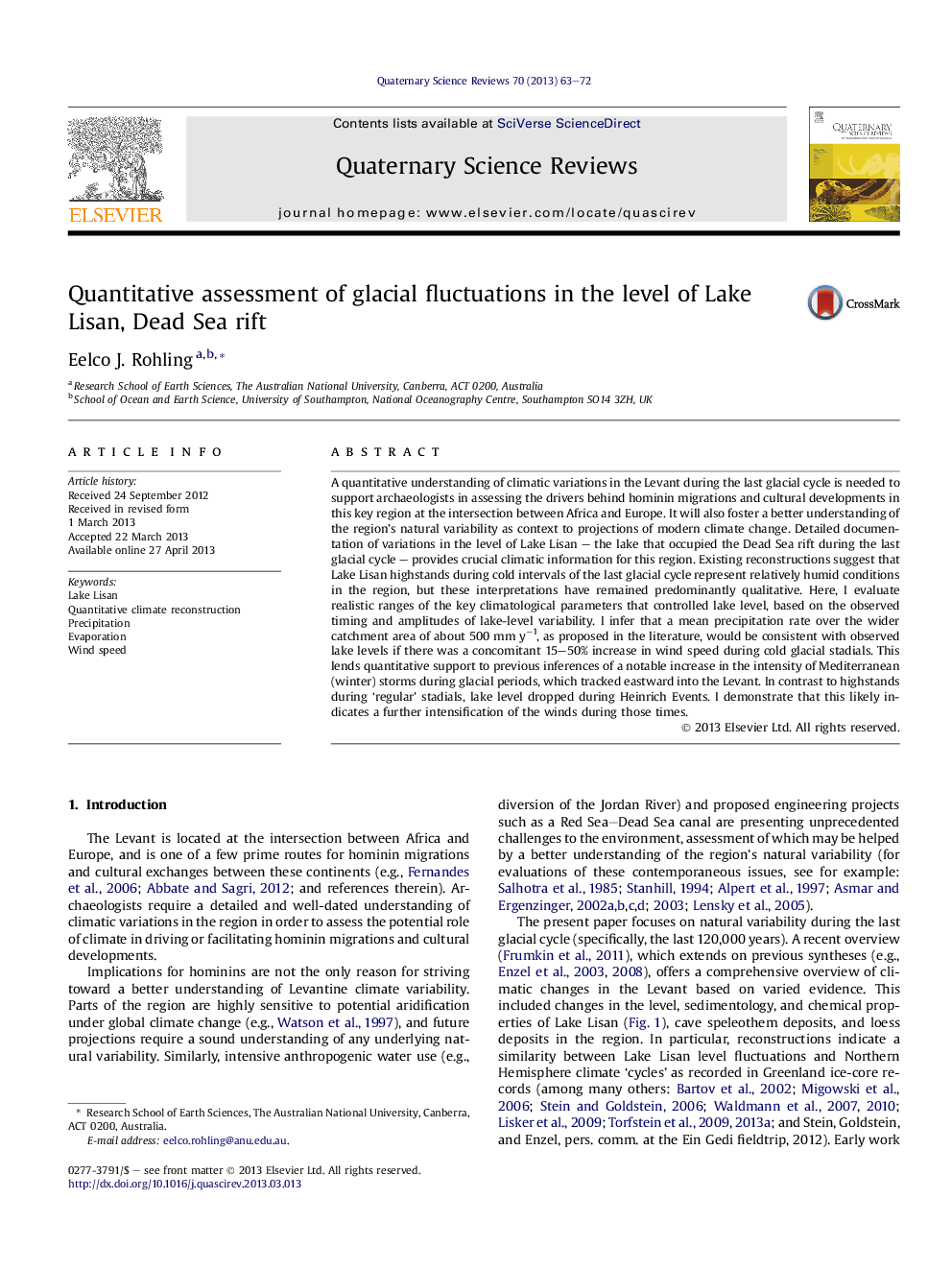| Article ID | Journal | Published Year | Pages | File Type |
|---|---|---|---|---|
| 6446798 | Quaternary Science Reviews | 2013 | 10 Pages |
Abstract
A quantitative understanding of climatic variations in the Levant during the last glacial cycle is needed to support archaeologists in assessing the drivers behind hominin migrations and cultural developments in this key region at the intersection between Africa and Europe. It will also foster a better understanding of the region's natural variability as context to projections of modern climate change. Detailed documentation of variations in the level of Lake Lisan - the lake that occupied the Dead Sea rift during the last glacial cycle - provides crucial climatic information for this region. Existing reconstructions suggest that Lake Lisan highstands during cold intervals of the last glacial cycle represent relatively humid conditions in the region, but these interpretations have remained predominantly qualitative. Here, I evaluate realistic ranges of the key climatological parameters that controlled lake level, based on the observed timing and amplitudes of lake-level variability. I infer that a mean precipitation rate over the wider catchment area of about 500 mm yâ1, as proposed in the literature, would be consistent with observed lake levels if there was a concomitant 15-50% increase in wind speed during cold glacial stadials. This lends quantitative support to previous inferences of a notable increase in the intensity of Mediterranean (winter) storms during glacial periods, which tracked eastward into the Levant. In contrast to highstands during 'regular' stadials, lake level dropped during Heinrich Events. I demonstrate that this likely indicates a further intensification of the winds during those times.
Related Topics
Physical Sciences and Engineering
Earth and Planetary Sciences
Geology
Authors
Eelco J. Rohling,
